The diesel-electric locomotive has been a mainstay of freight railroads and many passenger railroads for over a century. These locomotives have proven to have a great mix of power, fuel economy, and reliability that helps keep the world turning. One of the greatest advancements in modern diesel-electric locomotives was the AC traction motor. By utilizing alternating current-powered motors, today’s locomotives can have 100 percent greater adhesion than their older DC-powered counterparts while also upping both reliability and fuel economy. The first production American locomotive with AC traction motors, BNSF EMD SD70MAC 9400, was just donated to America’s largest train museum, the Illinois Railway Museum, where it’ll be preserved for generations to come.
This orange, yellow, and black locomotive might not look all that impressive. Most freight locomotives on America’s rails today look just like it! This locomotive was also built at the tail end of 1993, so it’s not even nearly as vintage as most locomotives that you’d find in a train museum. But the Burlington Northern Santa Fe No. 9400 wasn’t just a pioneer; it was the first of its kind. In the few decades after No. 9400 was finished, thousands of diesel-electric locomotives were built with AC traction motors, as that’s now the industry standard. What you’re looking at here is an important turning point in modern train history.
The life of a locomotive is often one without much fanfare. Countless locomotives dutifully serve their railroads, only to see themselves tossed to the scrapyard once their useful lives end. Even rare, historic, and weird locomotives have seen this fate perhaps too many times throughout history. Sadly, just like with classic cars and motorcycles, you cannot save them all, so it’s a real special occasion when a museum is able to rehome a vintage locomotive.
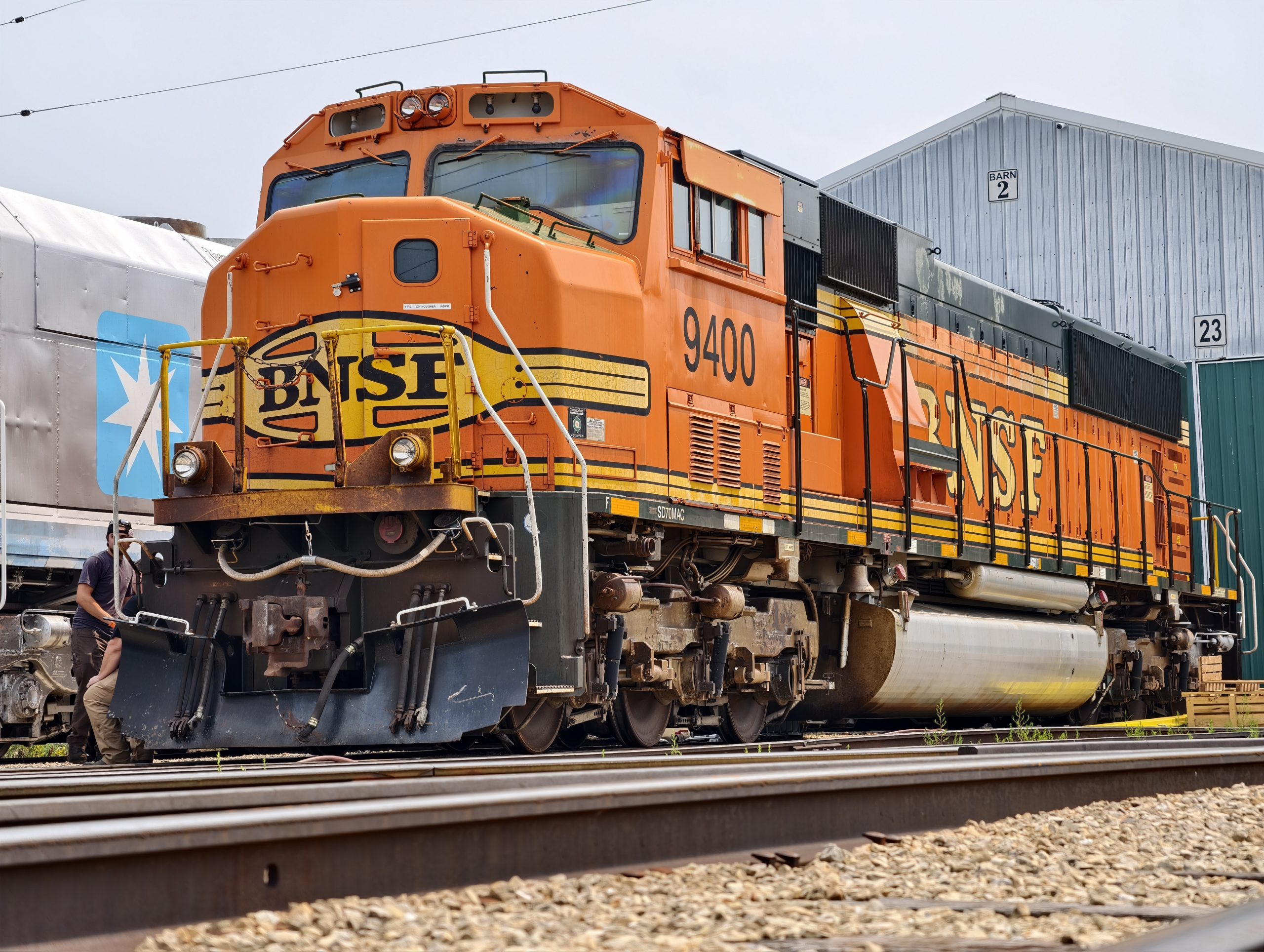
The legendary Illinois Railway Museum (IRM), a non-profit educational organization that’s been preserving train history since 1953, has been on a roll saving special diesels left and right. In just this year alone, IRM has saved a Chicago rail legend with the acquisition of a Metra 614, an EMD F40C. IRM has also picked up Amtrak 231, an F40PHR, and BNSF 6976, an SDP40F. All four of these locomotives represent fascinating points in locomotive history, and landing in the hands of IRM will ensure that railfans can be starstruck by them for decades to come.
Something that I love about IRM is the organization’s “Museum In Motion” concept. It’s not hard to find a museum full of cars, motorcycles, or locomotives that will never run again. IRM is not that. The museum has 5 miles of demonstration track laid down on former Elgin and Belvidere Electric Company right-of-way, over 100 acres of land, over 500 pieces of rail equipment, and even around three dozen motor buses and trolley buses.
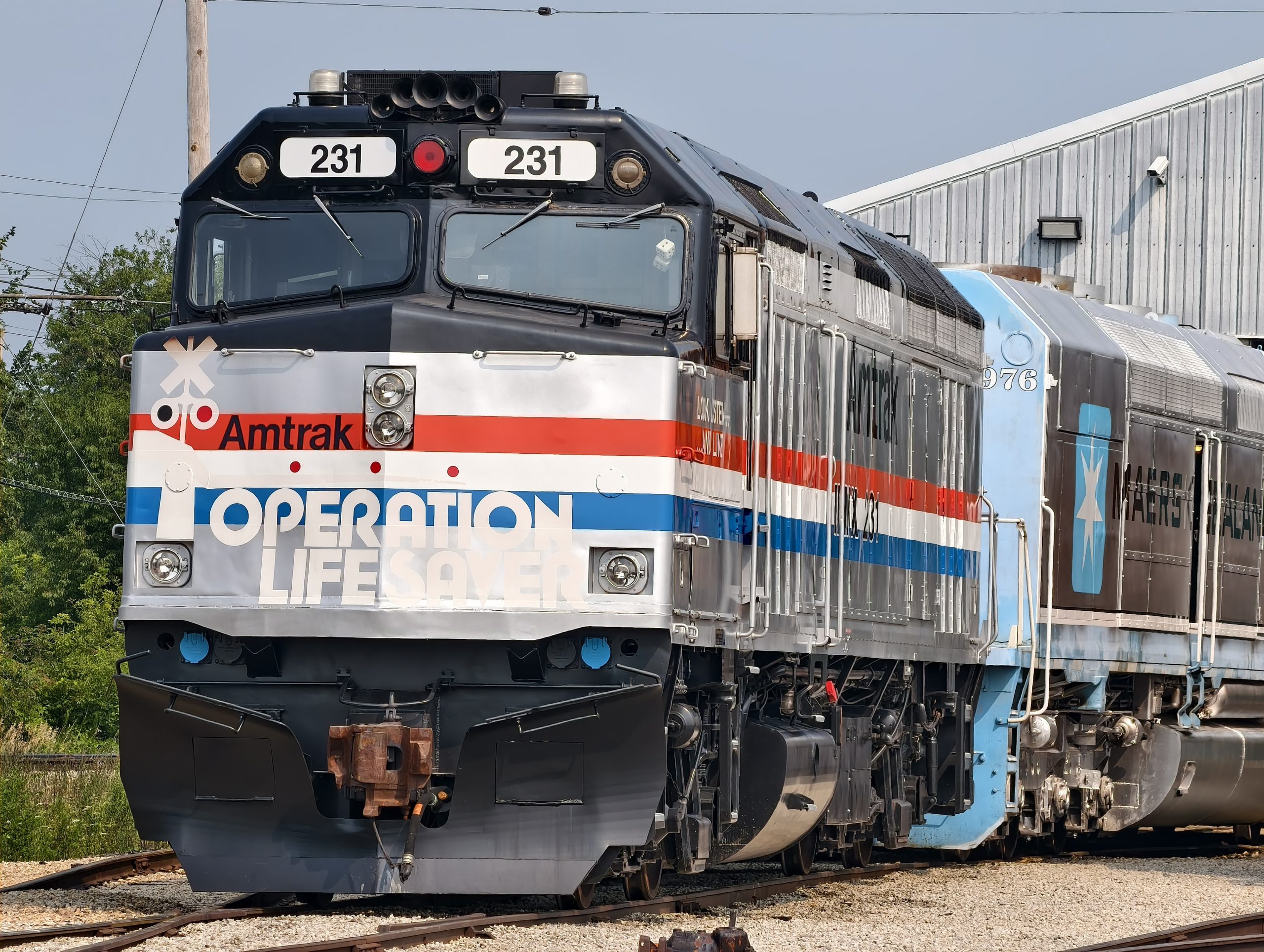
What’s great about all of this, aside from the sheer scale of the museum, is that so much of IRM’s equipment is in running condition. The organization, which runs on donations, ticket sales, memberships, and more, has an army of volunteers who do everything from maintaining and driving the trains to performing track work, guiding guests as conductors, and telling the history of each locomotive. IRM is like one huge family located on a mammoth property in Union, Illinois. This is all to say that No. 9400 is going to a good home.
But why am I gushing over this big orange beast in the first place? Well, it has to do with what came before.
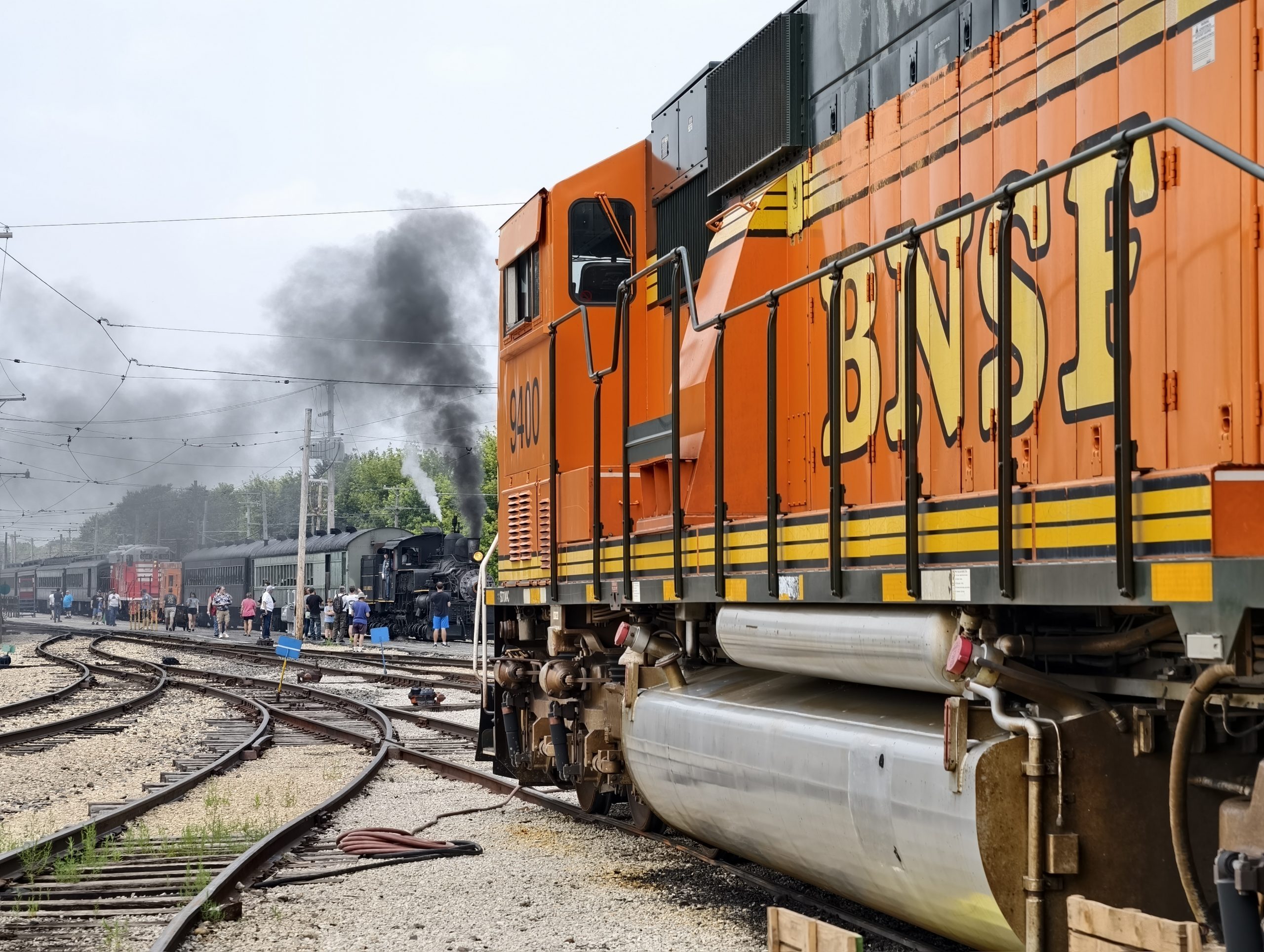
AC/DC
Diesel-electric locomotives have been around for over a century, and for most of that time, these locomotives were propelled forward using direct current (DC) traction motors. I’ll explain how this whole thing works.
The core of a diesel-electric locomotive is its diesel engine. These colossal engines are called prime movers, and they do not actually drive the locomotive. Instead, these meaty engines, which usually have horsepower ratings measured in the thousands with displacements above 100 liters, burn diesel fuel to generate mechanical energy. This power is then used to drive a generator (produces direct current) or an alternator (produces alternating current). Here’s where mechanical energy is turned into electrical energy, which is fed into powerful electric motors fitted to the locomotive’s axles, which provide the actual locomotion.
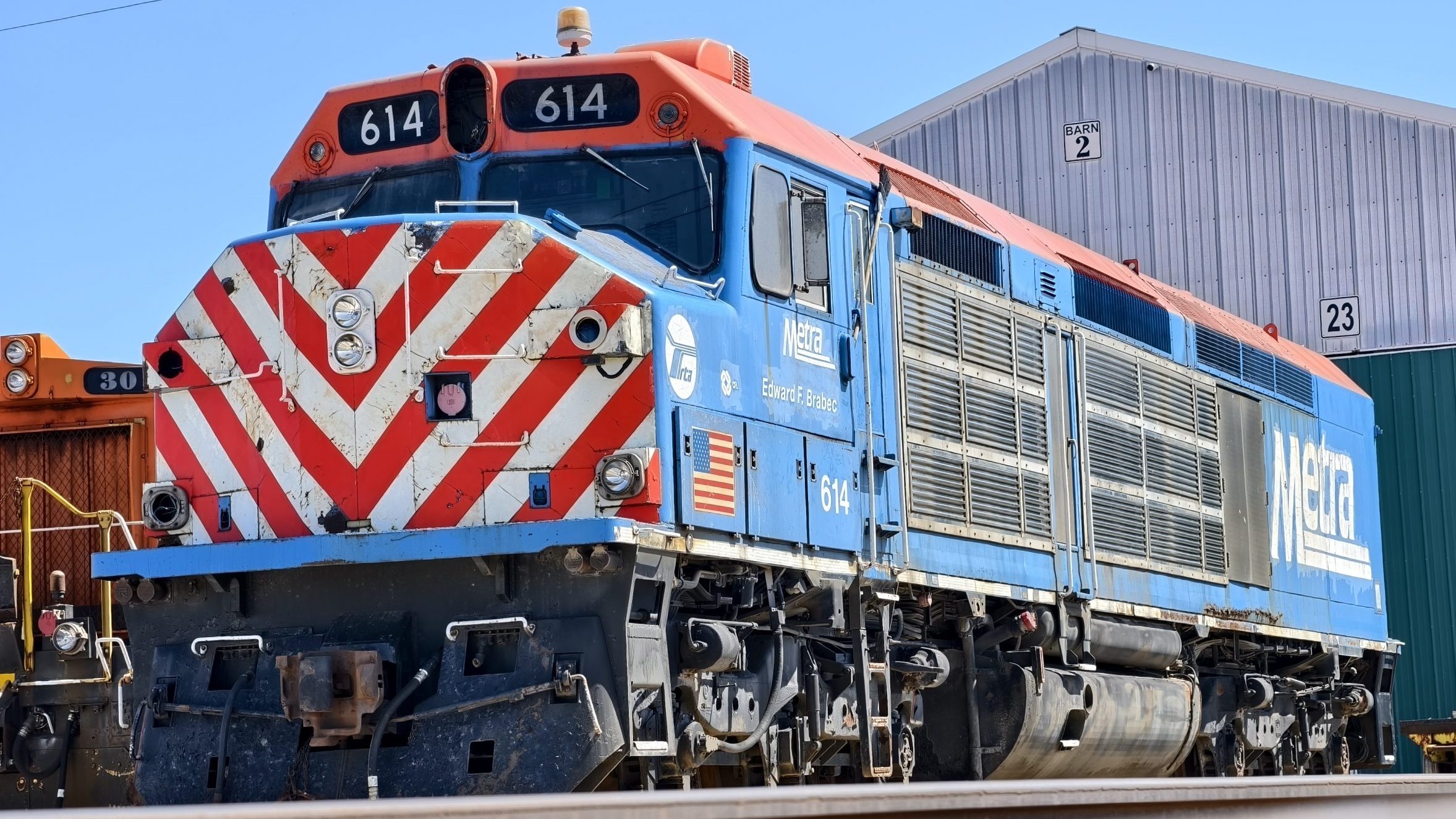
This is why these locomotives are called diesel-electric. However, there are other diesels, which I’ve written about before, including diesel-hydraulic locomotives and diesel-mechanical locomotives. In both of those cases, the big change is in how power is transmitted to the rails.
Nearly all diesel-electric locomotives built before the early 1990s featured DC traction motors. As railroad supplier Republic Locomotive explains, DC systems are quite simple, yet effective. A DC locomotive will have a number of throttle settings with a set power output for each notch. The Railway Technical Website explains how these motors were designed:
The motor consists of two parts, a rotating armature and a fixed field. The fixed field consists of tightly wound coils of wire fitted inside the motor case. The armature is another set of coils wound round a central shaft. It is connected to the field through “brushes” which are spring loaded contacts pressing against an extension of the armature called the commutator. The commutator collects all the terminations of the armature coils and distributes them in a circular pattern to allow the correct sequence of current flow.
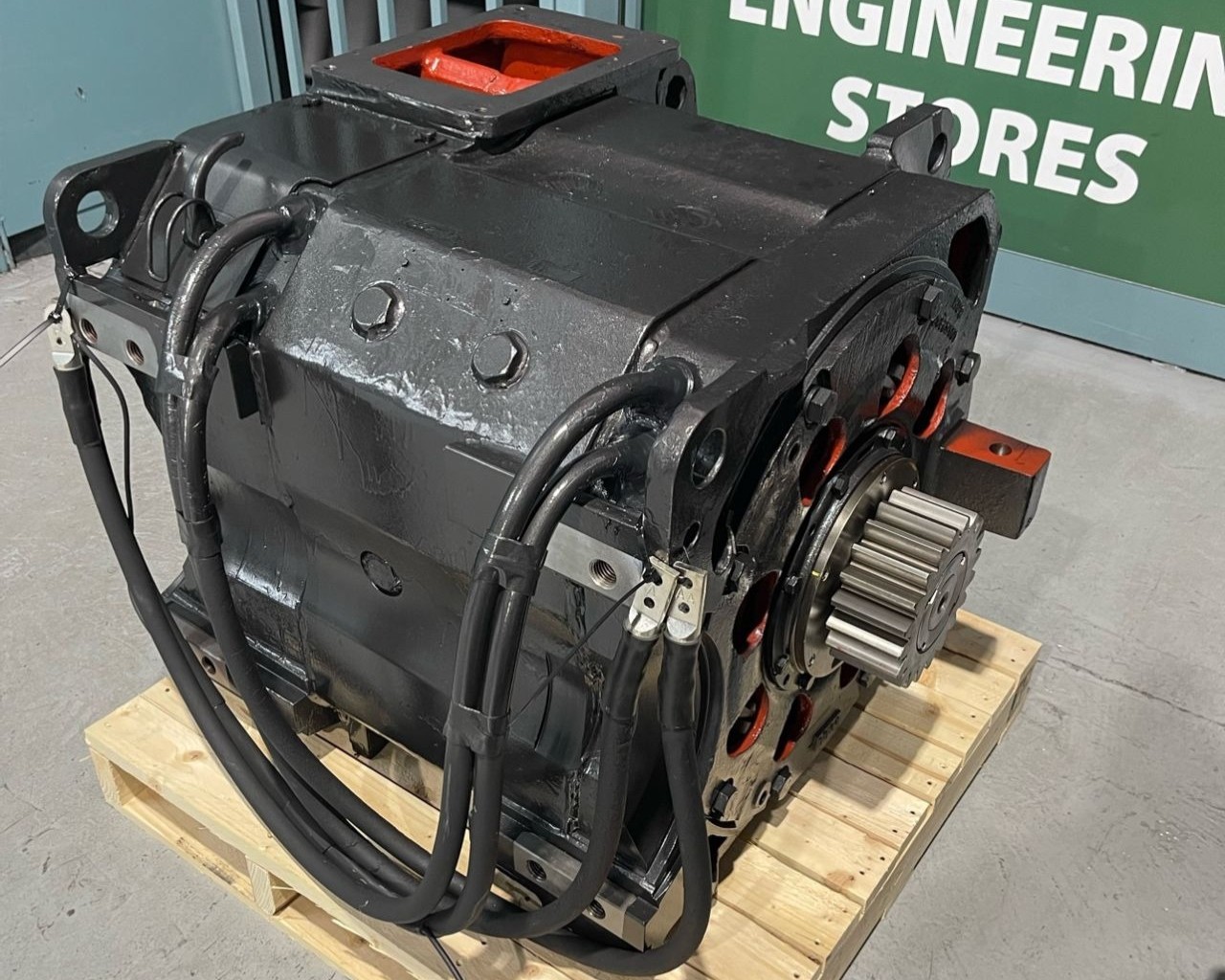
As the DC motor starts to turn, the interaction of the magnetic fields inside it causes it to generate a voltage internally. This “back voltage” opposes the applied voltage and the current that flows is governed by the difference between the two. So, as the motor speeds up, the internally generated voltage rises, the effective voltage falls, less current is forced through the motor and thus the torque falls. The motor naturally stops accelerating when the drag of the train matches the torque produced by the motors. To continue accelerating the train, resistors are switched out in steps, each step increasing the effective voltage and thus the current and torque for a little bit longer until the motor catches up. This can be heard and felt in older DC trains as a series of clunks under the floor, each accompanied by a jerk of acceleration as the torque suddenly increases in response to the new surge of current. When no resistor is left in the circuit, the full line voltage is applied directly to the motor. The train’s speed remains constant at the point where the torque of the motor, governed by the effective voltage, equals the drag – sometimes referred to as balancing speed. If the train starts to climb a grade, the speed reduces because drag is greater than torque. But the reduction in speed causes the back voltage to decline and thus the effective voltage rises – until the current forced through the motor produces enough torque to match the new drag.
On an electric train, the driver originally had to control the cutting out of resistance manually but, by the beginning of the First World War in 1914, automatic acceleration was being used on multiple-unit trains. This was achieved by an accelerating relay (often called a “notching relay”) in the motor circuit which monitored the fall of current as each step of resistance was cut out. All the driver had to do was select low, medium or full speed (called “shunt”, “series” and “parallel” from the way the motors were connected in the resistance circuit) and the equipment would do the rest.
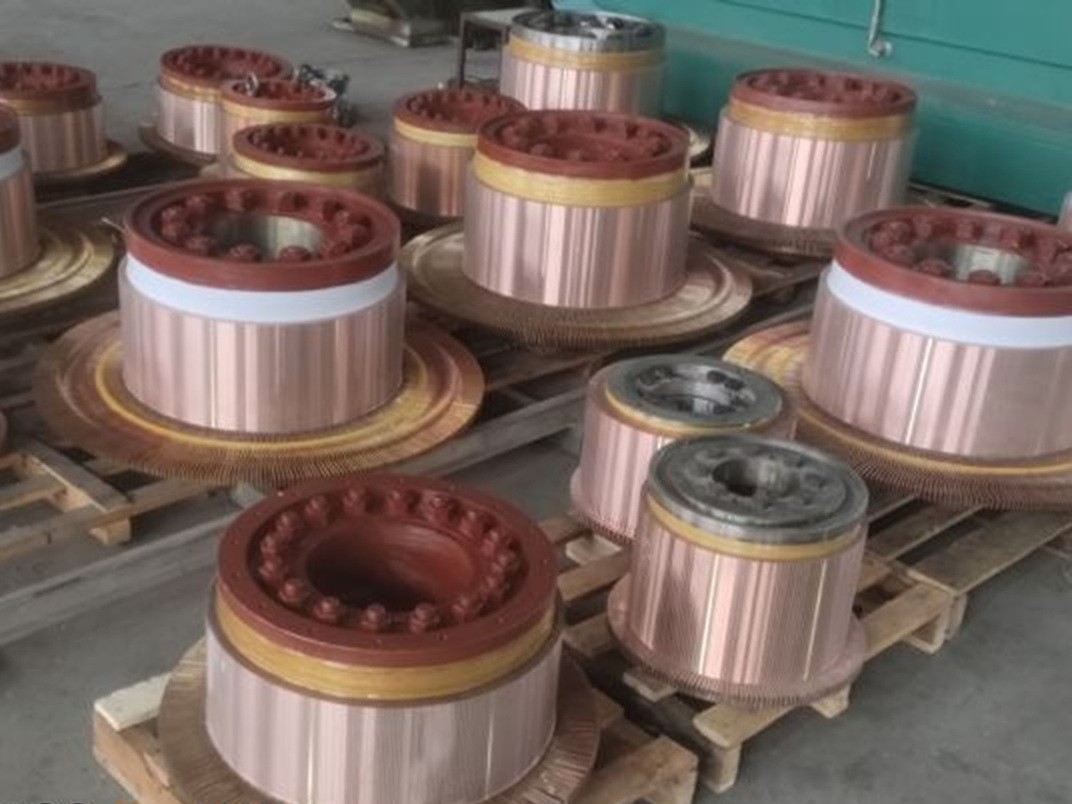
These DC motors worked for decades and had been proven to be powerful and reliable enough to help diesel-electric technology surpass the ideas of old, like steam. However, DC motors were not perfect.
DC Quirks
As Republic Locomotive writes, DC motors had funny quirks. One quirk was that if wheel slip occurred during acceleration, friction is reduced enough that a DC motor might speed up and enter a runaway condition, which could result in the motor burning up if the condition isn’t corrected fast enough. The twist here is that since all of a locomotive’s DC motors attempt to operate as one, the cure to wheel slip is to reduce the load to all motors. Because of this, Republic Locomotive notes, a DC locomotive’s maximum adhesion occurs at a level that’s below the theoretical maximum. Newer DC-equipped locomotives use a sort of traction control system to monitor for wheel slip and correct slippage before it gets out of control, allowing a DC locomotive to get closer to its theoretical maximum.
Tractive effort is a locomotive’s pulling force, which, when divided by the locomotive’s weight, equals adhesion. The best way to describe adhesion is that it defines how well a locomotive’s wheels grip the rails.
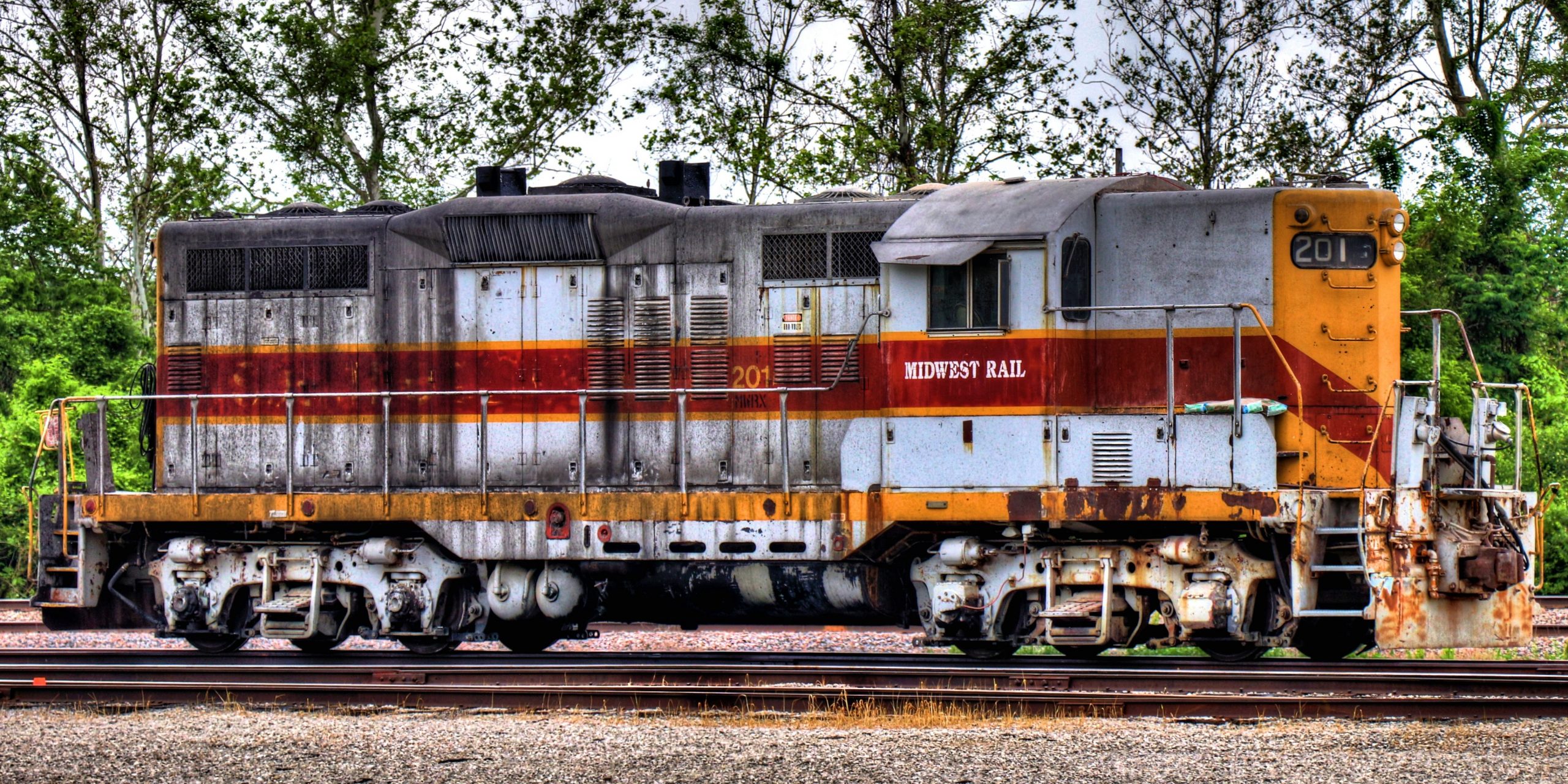
Another quirk noted by Republic Locomotive is that DC traction motors have an interesting relationship with weight transfer, from the company:
When a locomotive is pulling a load, weight tends to transfer from the front axle to the rear axle of each truck. At maximum tractive effort, the weight on the lead axle may be reduced by about 20%. Since the tractive effort is proportional to the weight on drivers, then in a DC system where the motors are fed from a common source, the tractive effort will be determined by the lightest axle. Thus, in effect, the equivalent locomotive weight is reduced by about 20%.
Because of these three factors, Republic Locomotive says, first-generation DC locomotives like the General Motors Electro-Motive Diesel (EMD) GP9 (above) and the EMD SD40 might have adhesion levels of only 18 percent to 20 percent, while a later DC locomotive like an EMD SD60 or a General Electric Dash 8 might get as high as 27 percent.
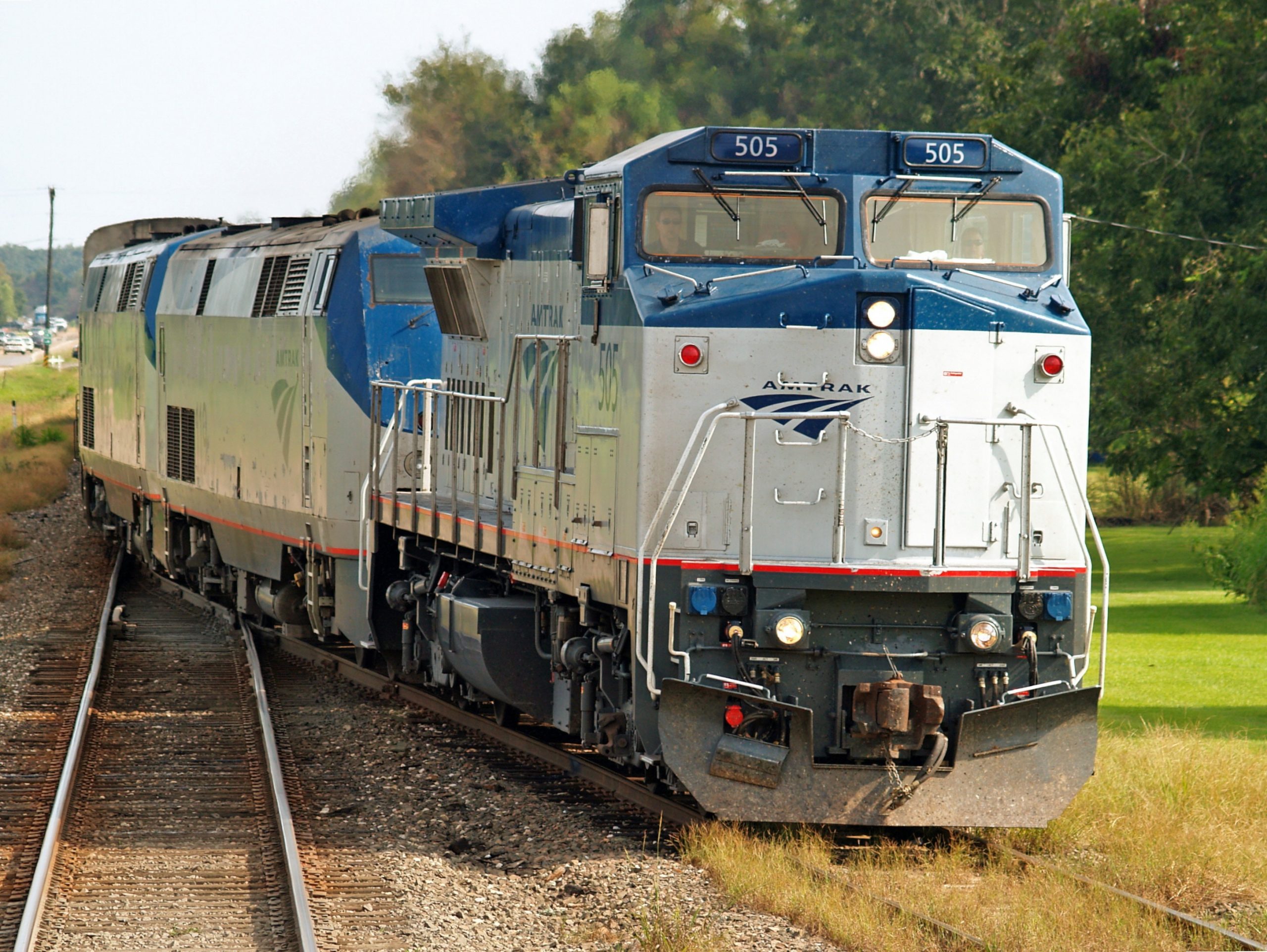
AC locomotives would be a major breakthrough as not only did alternating current make locomotives more reliable, but they also dramatically increased adhesion.
A Breakthrough
As Trains.com writes, the locomotive industry was slow to adapt to AC power. AC motors had been adapted by manufacturing industries, mining, mills, and more long before locomotives did. The advantages of AC motors were clear, but locomotives had to wait. Part of the problem was just that solid-state electronics weren’t quite where they needed to be until about the 1970s. The other problem was that, while designing a powerful AC motor might not have been that big of a deal, making motors that could survive railroad duty and could be controlled in a railway setting was the major hurdle.
Trains.com described a major breakthrough that made AC diesel-electric locomotives closer to reality:
This was made possible when gate turn-off thyristor (GTO) technology was developed by GE. GTOs are high-powered semi-conductors that function as an inverter when controlled by a microprocessor, converting DC to AC current. Inverters, however, do not produce a true sinusoidal wave form. Rather, they generate pulse-width modulation that resembles a sinusoidal wave form. The combination of GTOs and microprocessors make variable-speed AC motors practical in robust, high-power applications.
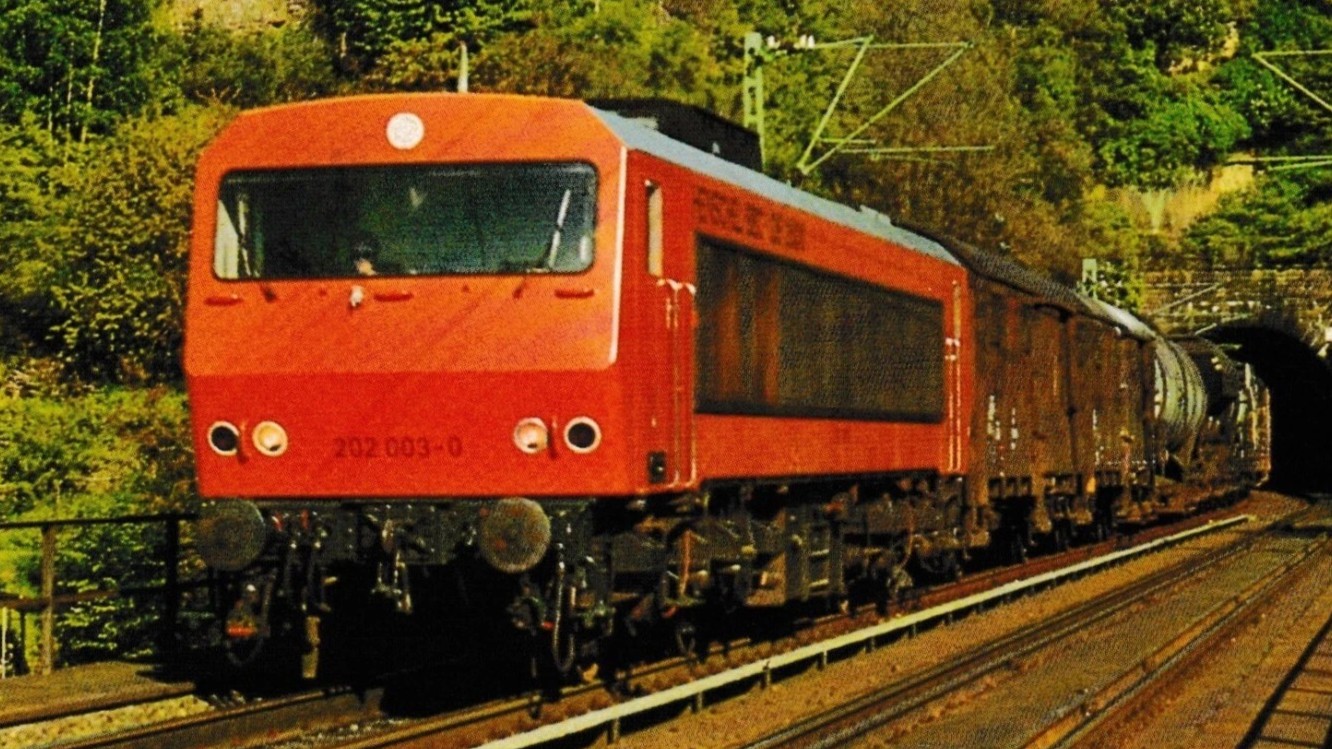
As Railway Age writes, the first diesel-electric locomotive with AC traction motors was Germany’s Henschel-BBC DE2500 (above) of 1971. These locomotives were called the Class 202 and ran on Germany’s state railway, the Deutsche Bundesbahn (DB). Class 202s had 2,500 HP and a frequency-controlled traction drive system with asynchronous traction motors and static converters. The DE2500 was an experimental locomotive, but AC power proved to be so promising that DB put the technology into electric locomotives.
Over in North America, Canada was the first to adopt AC technology. In 1984, the Canadian Pacific Railway launched locomotive No. 4744, which was a 1971 Montreal Locomotive Works M-640 modified to use AC traction motors. However, the real leader in AC technology was the Electro-Motive Diesel of General Motors, which teamed up with supplier Siemens to develop heavy-haul, six-axle, diesel-electric freight locomotives.
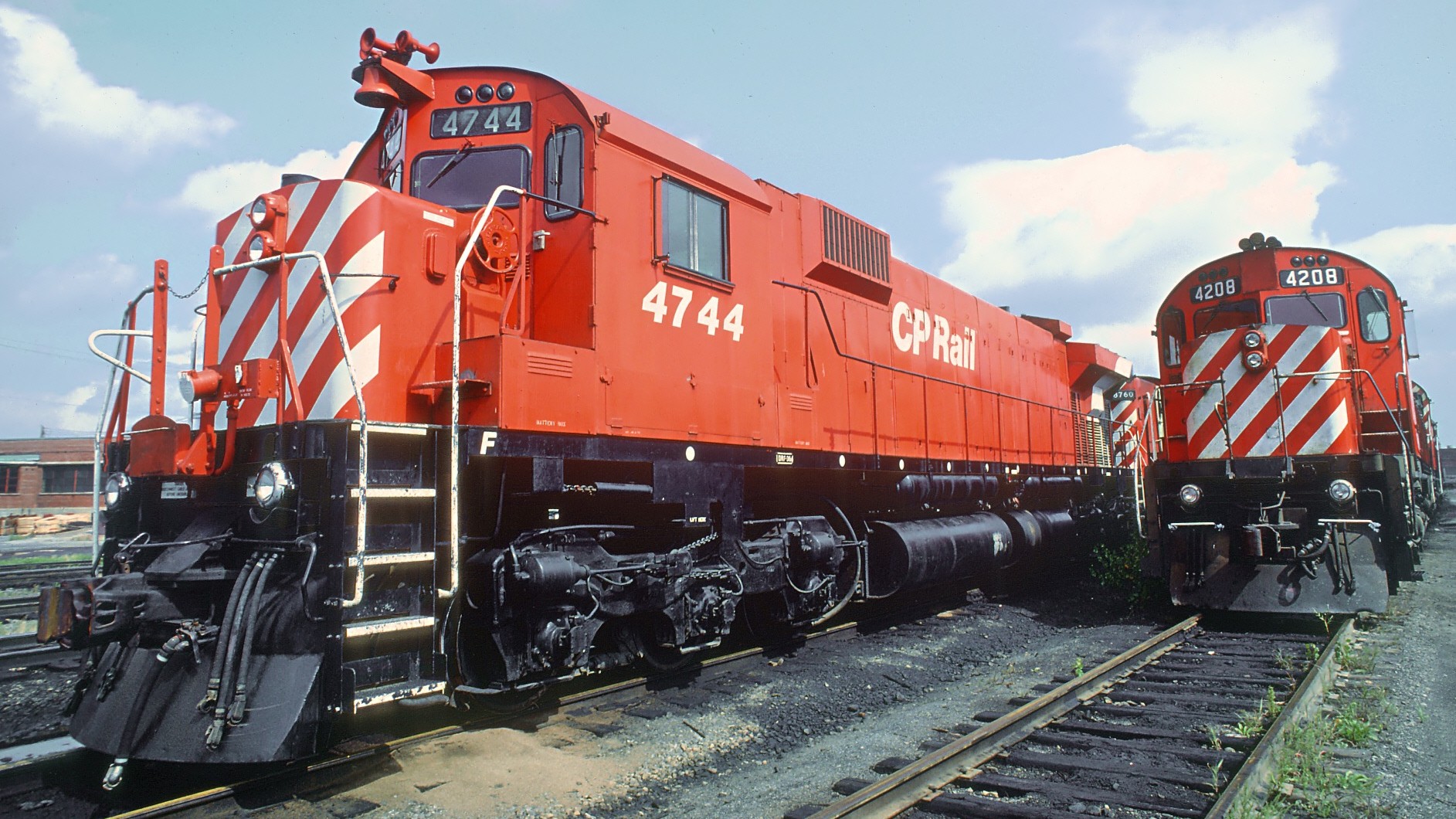
From Railway Age:
The Siemens traction motor system used one [GTO] inverter per truck. In 1987, GE Transportation (now Wabtec) followed with an experimental six-axle unit with AC drive and individual regulation of each traction motor with one inverter per axle. In 1989, EMD produced two passenger prototypes, the four-axle F69РНАС, the first U.S. diesel-electric locomotive to use inverters with GTO (gate turn-off) thyristors and evaporative cooling.
Freight locomotive AC traction gained momentum in 1991-1992 with the EMD SD60MAC. These 4,000-hp, six-axle units used Siemens traction motors. Four demonstrators were built. In late 1992, these units demonstrated high adhesion qualities during testing at TTCI (now TTC Operated by ENSCO), establishing that three AC locomotives could replace five SD40-2 DC traction units, which were commonly used on heavy-haul Powder River Basin unit coal trains on the Burlington Northern (now BNSF). After further testing on BN, these locomotives were demonstrated in experimental service on nine North American Class I railroads in the U.S. and Canada.
Making History
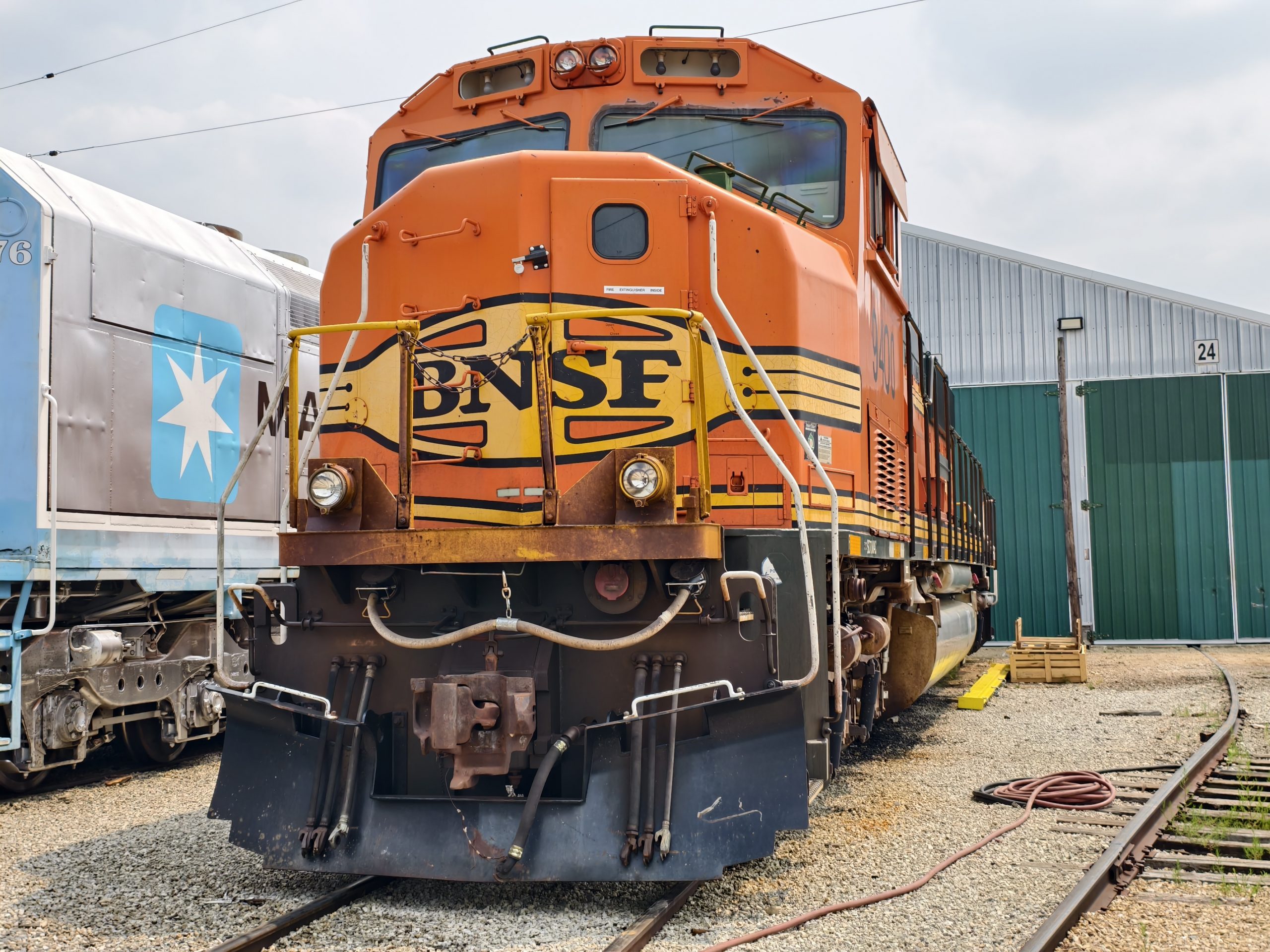
AC power had proven to be so great that in 1993, the Burlington Northern Railroad (BN) made the then-unprecedented move of ordering 350 SD70MAC locomotives from EMD. In case you’re curious, yes, that alphabet soup of letters and numbers means something! The EMD SD70 went into production in 1992, originally with DC motors. The SD70MAC is an evolution of the SD70, and its name means “Special Duty, 70 Series, Modified cab, Alternating Current.” The “SD” nomenclature was used by EMD to designate its heavy freight locomotives, and the “Modified cab” there refers to the “North American Safety Cab” design, which gave railroaders operating the train more comfort than other designs.
Anyway, BN’s order of these locomotives was monumental. Until this point, AC locomotives were experimental in America, but here was a major railroad going all-in on the concept.
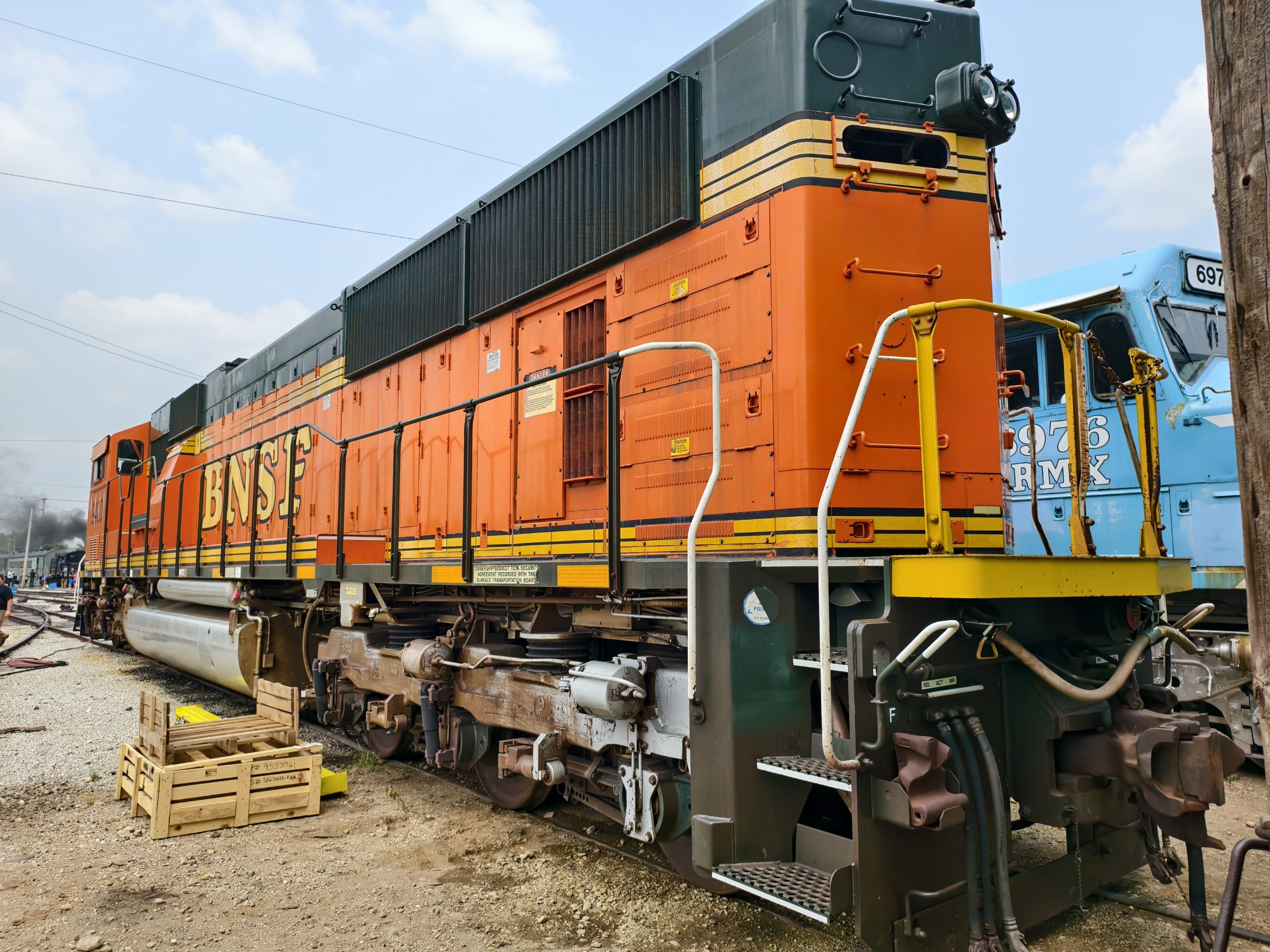
BN had good reason to. As Republic Locomotive writes, AC locomotives have huge advantages. AC traction works by converting the traction alternator output to DC and then converting it to variable frequency AC, which gets sent to the AC traction motors. AC traction motors operate at approximately the frequency of the current, and the drive system adjusts the frequency so that the motors can run through their full range of RPM. AC locomotives also use robust microprocessor control systems, which, like the computer systems in your car, allow for fine control of practically every parameter of a locomotive.
Remember the quirk with DC motors and weight transfer? AC locomotives can combat this by reducing power output to the less-weighted axle while increasing power to the axle with weight on it. AC locomotives can also control the output of specific motors, allowing the locomotive to operate even closer to its theoretical maximum adhesion. The drive system can also detect wheel slip and kill it faster and more efficiently than a DC locomotive can.

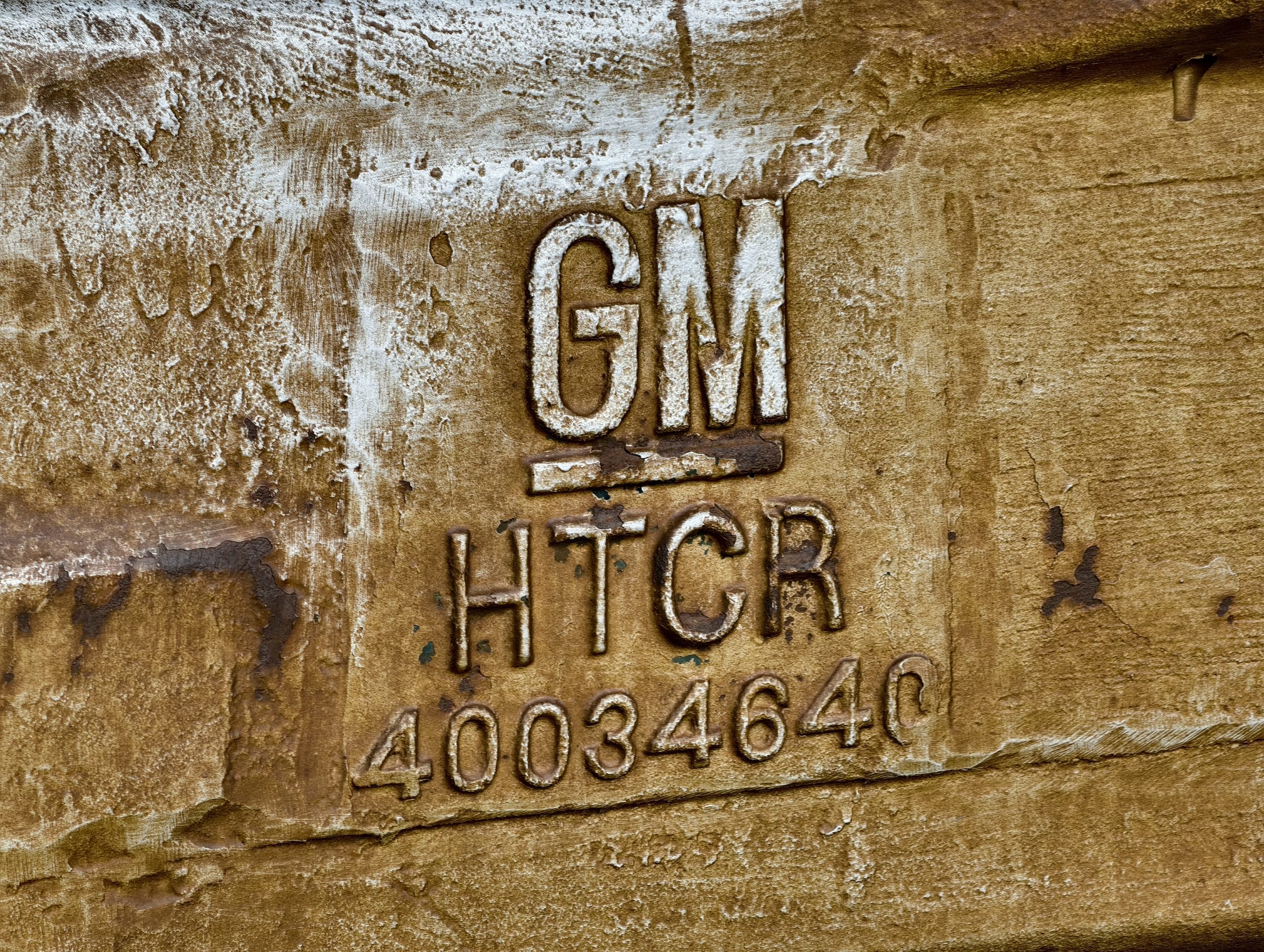
These effects and more allow AC locomotives to have up to 100 percent more adhesion than a DC locomotive of old. In practical terms, this means that a railroad might be able to get away using only one diesel-electric locomotive in an application that might have required two locomotives. AC diesel-electrics are also said to get better fuel economy, too.
As a bonus, AC locomotives have turned out to be reliable monsters, with simpler, lighter motors that don’t burn out during acceleration and require no mechanical contacts like brushes. As Trains.com writes, AC-equipped locomotives even have better dynamic braking than DC locomotives. In dynamic braking, a locomotive’s electric motors work like generators and slow down the train. Per Trains.com, AC locomotives can have dynamic braking so good that they can almost stop on the motors alone.
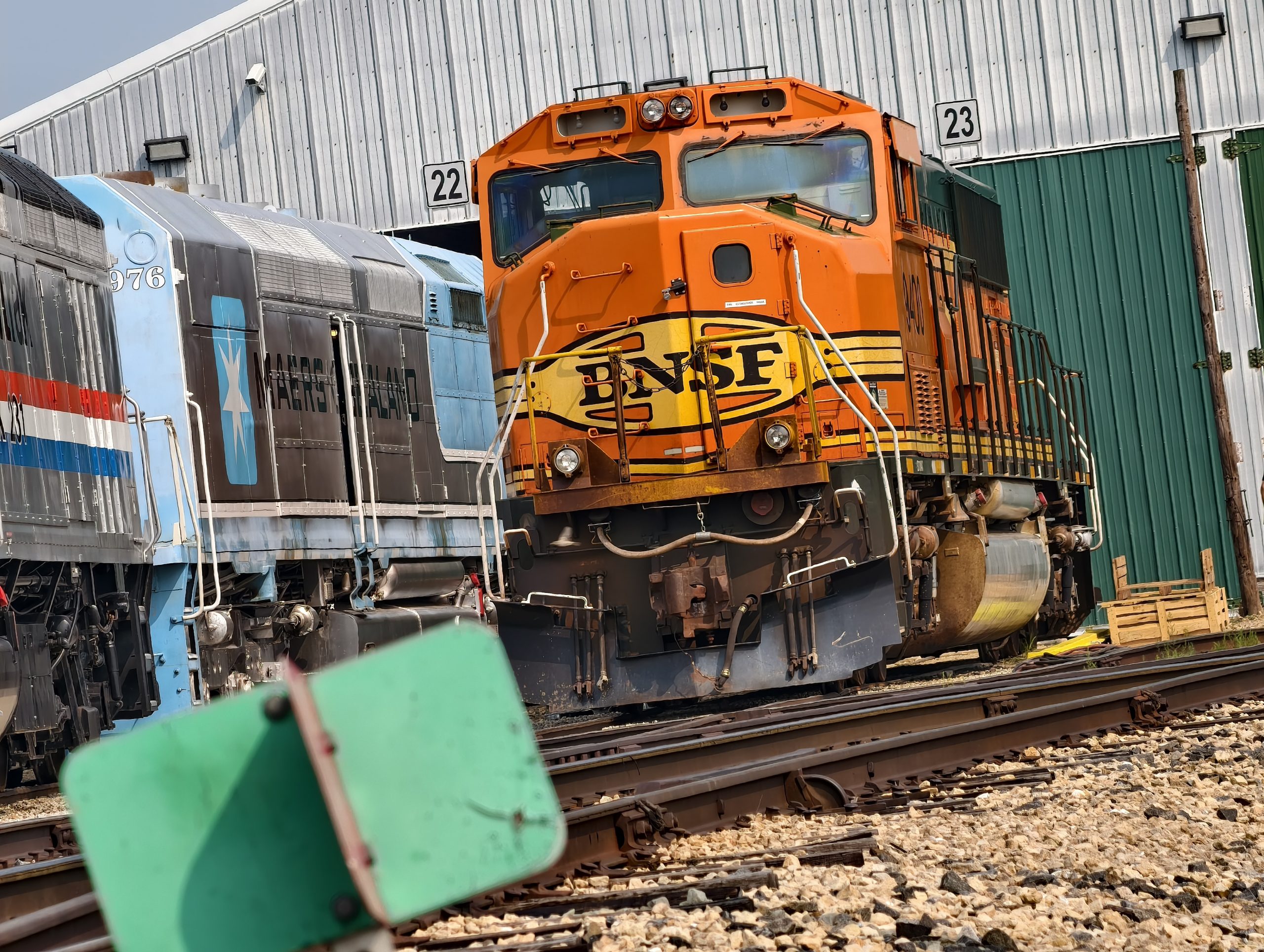

Production of the EMD SD70MAC commenced toward the end of 1993, and as I explained above, it was a leap forward. Most EMD SD70MACs, like BNSF (now IRMX) No. 9400, were equipped with EMD 16-710 prime movers, which were 186-liter V16 diesels rated at 4,000 HP. These brutes send power to a sextet of GM 1TB2630 motors. These beasts measure 74 feet long, have 175,500 pounds of starting tractive effort, and 137,000 pounds of continuous tractive effort at 12 mph. In case you’re curious, and I know you are, you’re looking at 415,000 pounds.
Burlington Northern, which would later become Burlington Northern Santa Fe (BNSF) after BN’s acquisition of the Atchison, Topeka and Santa Fe Railway, ran No. 9400 for a whopping 25 years, where the locomotive earned its keep. Over that time, AC locomotives like 9400 went from being rare to being commonplace. Today, even major commuter rail operations like Chicagoland’s Metra have AC locomotives on their rosters. Oh, be sure to listen to how the SD70MAC sounds:
Back in 2024, BNSF began preparations to retire No. 9400, and IRM was chosen for its destination. This planning took months, and the locomotive officially joined the IRM fleet in July. Sadly, 9400 will need restoration before it can run on IRM’s demonstration line, but I know IRM’s capable diesel shop will get it running. Either way, IRM has saved another important part of history.
What’s interesting is that, in the days immediately after BNSF 9400 was constructed, it already became a part of IRM history when IRM loaned its iconic Nebraska Zephyr to BN for a formal dedication ceremony that included 9400.
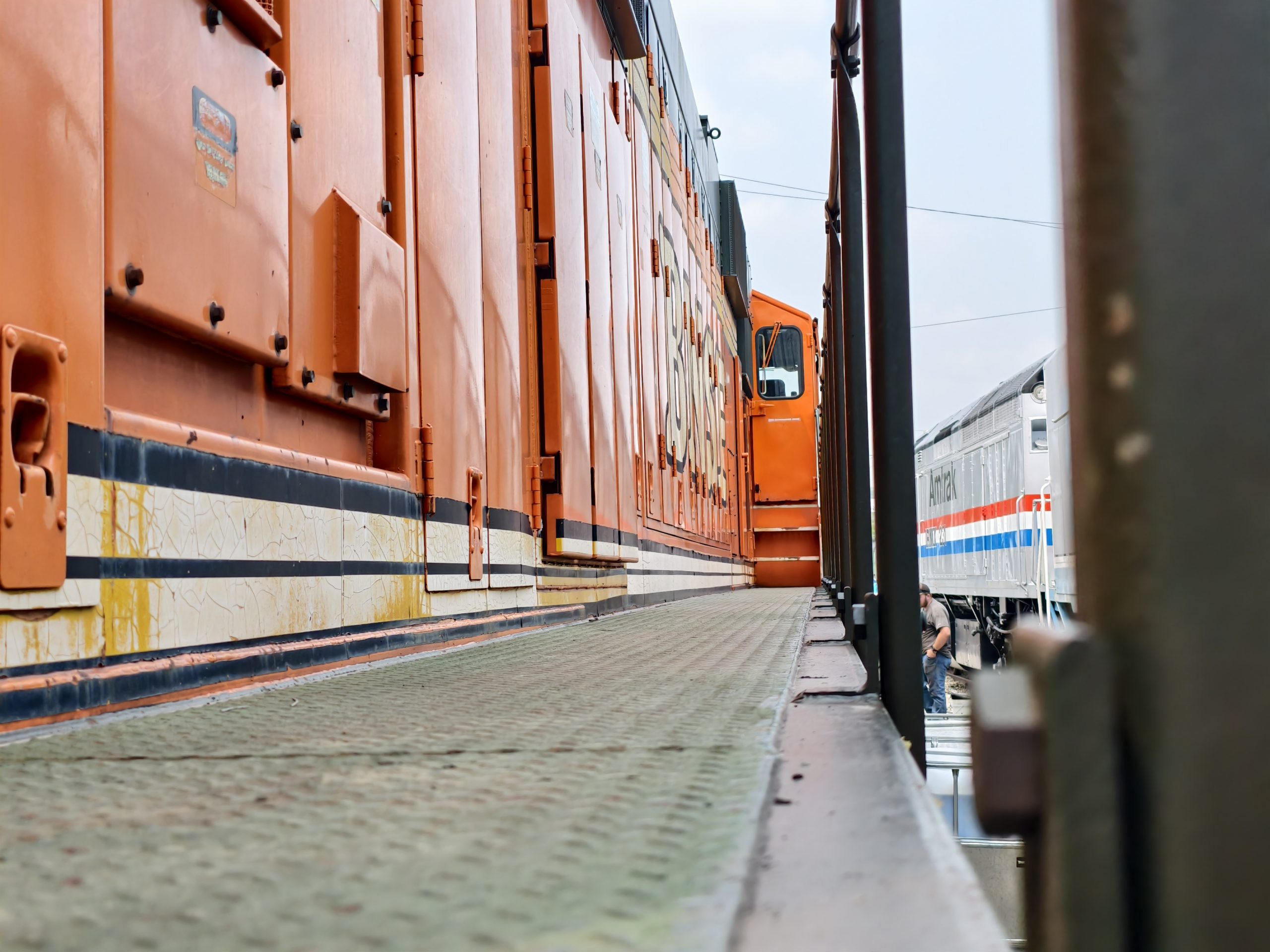
Here’s what IRM says about the occasion:
Following testing during the early 1990s of freight diesels fitted with AC traction motors, Burlington Northern placed the first production order for AC traction motor-equipped diesels with EMD in 1993. The order, for 350 locomotives numbered 9400-9749, was constructed between November 1993 and mid-1996. The 4,000-horsepower locomotives were groundbreaking not only for their AC traction motors but also for their radial trucks, computerized control systems, sound-deadened wide cabs, and “desktop” engineer’s control layout.
BN 9400 was given stainless-steel handrails and participated in a formal dedication ceremony in Fort Worth, Texas, in January 1994. Alongside the new SD70MAC was Chicago Burlington & Quincy E5 9911A “Silver Pilot,” on loan from IRM along with the “Nebraska Zephyr” trainset. Following its debut, 9400 entered daily service with BN and later BNSF, remaining in revenue service for nearly 25 years. In becoming part of the IRM historic collection, BNSF 9400 joins historic EMD products including the first GP-type and first SD-type locomotives ever built as well as CB&Q 9911A, the last E5.
The Museum plans to restore 9400 to operation and eventually repaint it to its original appearance, but donations are needed to cover the costs of storage, mechanical work, and restoration. Click here to support the preservation and restoration of BN 9400.
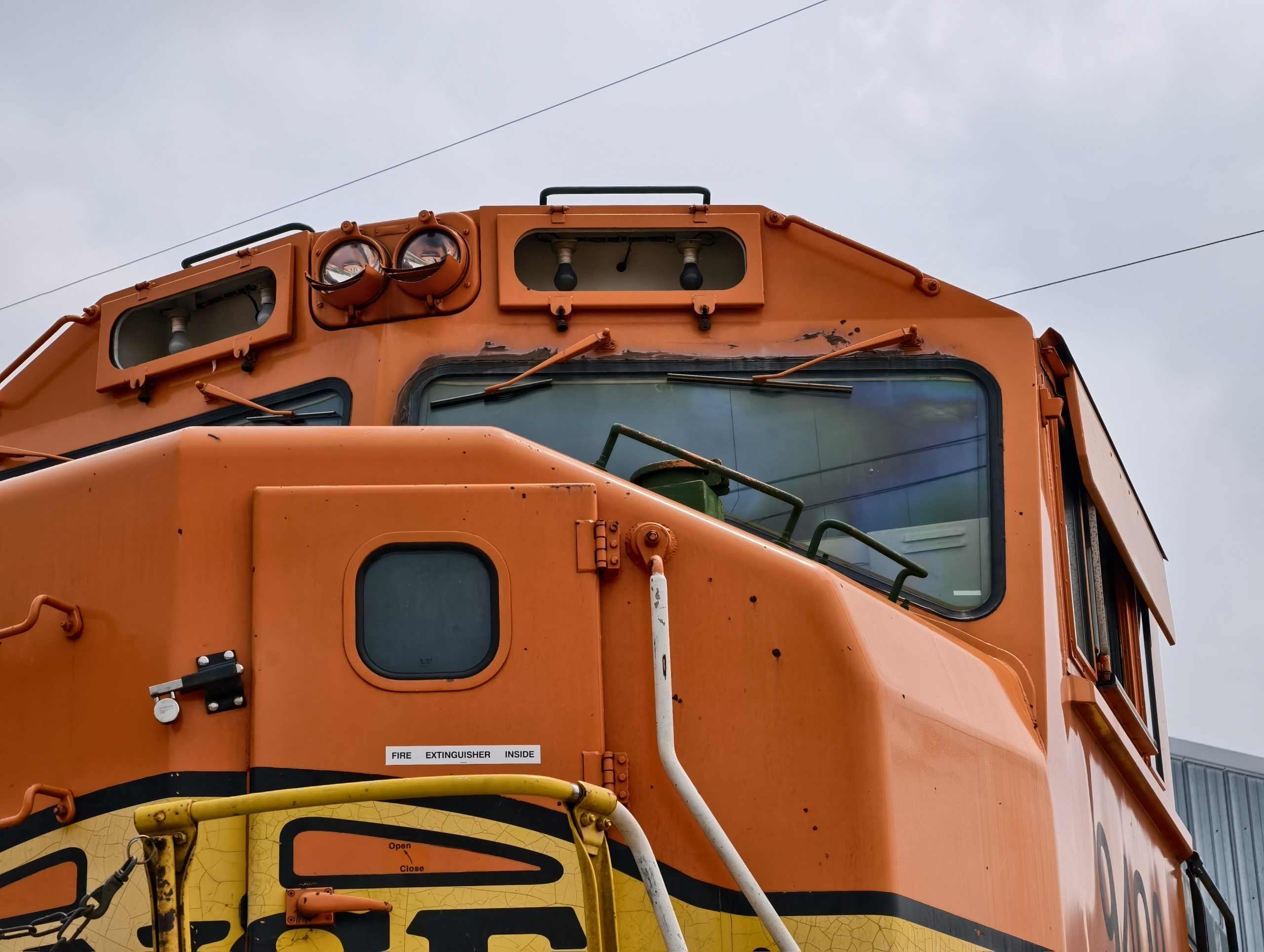
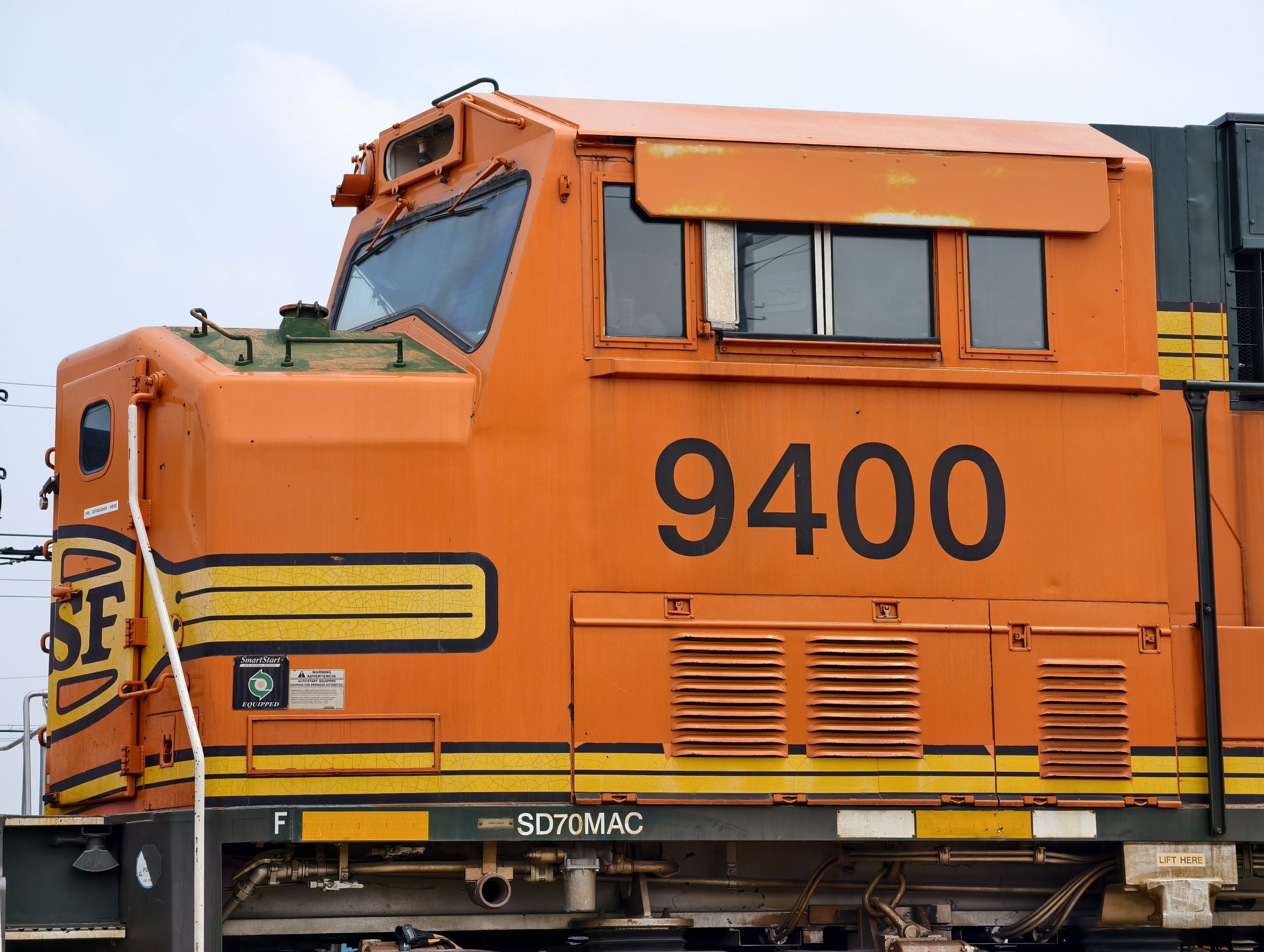
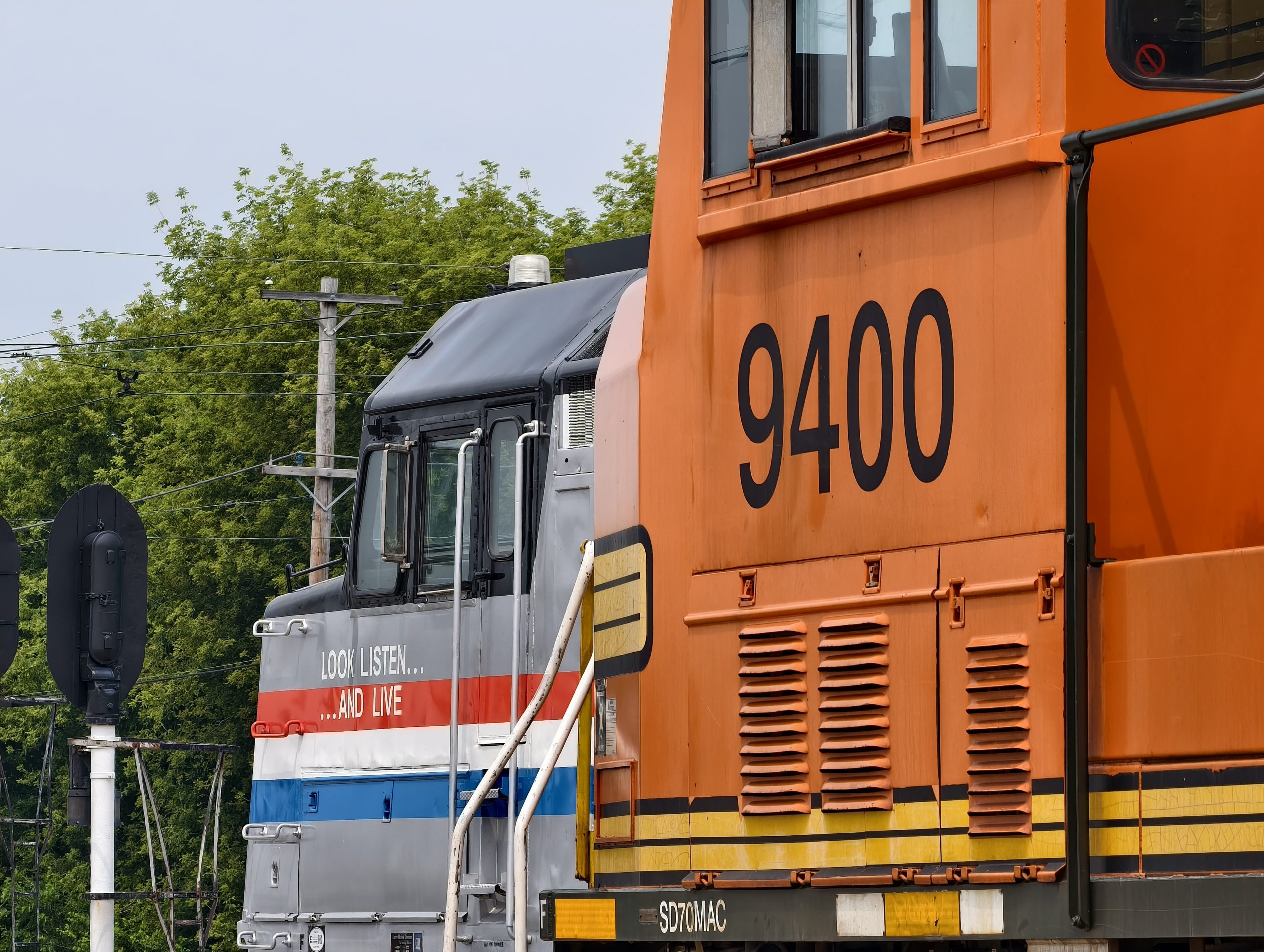
I got to see No. 9400 during the museum’s 34th Annual Vintage Transport Extravaganza, where I displayed my little Honda Life. It was amazing to stand in the presence of such a giant and important fixture of train history. Ol’ 9400 stood tall and proud. What’s impressive is despite its age, 9400 looks really solid. It’s pretty common for retired locomotives to be peppered with rust holes and ruined paint, but BNSF 9400 is still presentable. It’s going to look so cool in its original BN color scheme.
It’s always interesting to see the starting point of technologies that are so common today, whether they’re planes, trains, or automobiles. AC diesel-electric locomotives are so common today that so many people see them and probably think nothing about them. While BNSF 9400 wasn’t the first in the world, it definitely got the trend kicked off. If you want to see 9400, I highly recommend a visit to the Illinois Railway Museum. I promise you won’t regret it.
Top graphic image: Flickr/Reginald T. McDowell Sr.

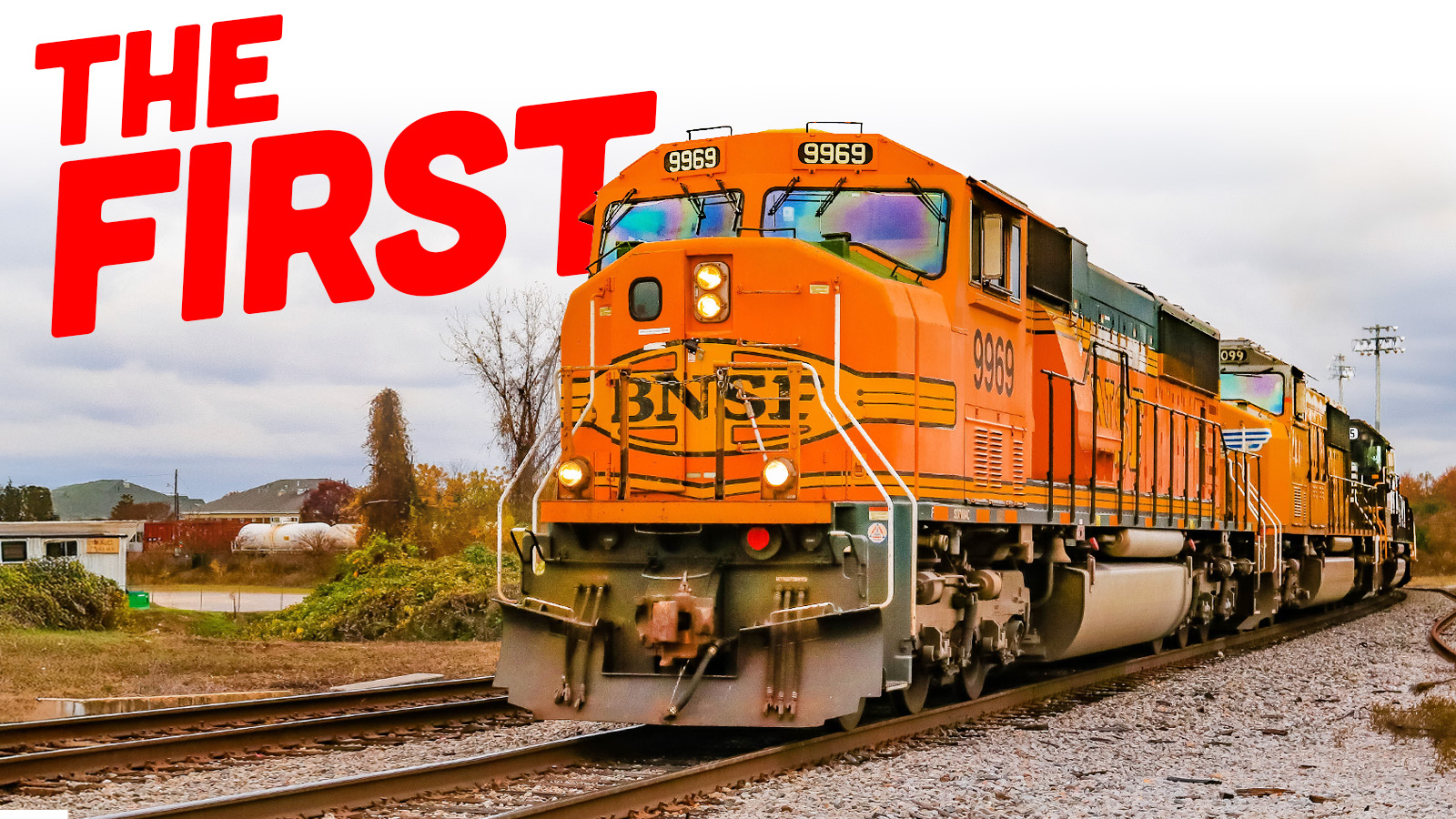






As usual, another great read by Mercedes on the subject of trains & locomotives. I remember seeing these Mac’s when they were new, hauling coal and empties up and down the stretch of Mississippi river where I worked in Iowa. They were beautiful and classy with their Grinstein Green and Cream paint separated by a retroreflective red double pinstripe. I always thought there was an understated elegance to that BN special paint scheme as compared to the latest Great Northern meets Santa Fe Warbonnet busy colors that quickly faded in short time. And that great EMD sound was still there in their 710 engines. To the steam folks: go to the Horseshoe Curve in PA if you are east based, or Tehachapi if you are living in the west, to hear AND feel these high performance engines grinding up a grade. It literally shakes your bones!
Kudos too goes out to the IRM in getting such a historically important diesel. Salute of gratitude to goes out as well to the BNSF. Here in the East, the Conrail Historical Society went to great lengths trying to negotiate a donation of one of the 30 SD80 Mac’s initially purchased by Conrail. In the end, the V-20 710 prime movers were removed for marine or stationary use and the shells were scrapped, forever losing another important EMD and Conrail milestone. So, IRM getting the first AC diesel in the US for mainstream use (not counting the 4 SD60 Mac’s that basically were an EMD testbed) is indeed, a great coup for them and railfans everywhere.
I love your rail articles. Your love for the subject really shines.
I made my first visit to the Illinois Railway Museum today. Thanks Mercedes, for turning me on to this great experience!
Terrific article. Very informative and well-researched. Thanks.
Even though I’m not an anorak by any means I found this article to be fascinating. Had no idea about the importance of AC, much less the distinction between AC and DC, in the railroad industry.
“The legendary Illinois Railway Museum (IRM) […] that’s been preserving train history since 1953”
Funny to think that a museum dedicated to preserving the history of a relatively modern form of transportation is now older than some of the aforementioned history. The IRM at 72 years of age is more than twice as old as the BNSF EMD SD70MAC 9400 at a mere 32 years of age!!
Most of these got started when Steam was being phased out.
The Railroad Museum of Pennsylvania lucked out in that the Pennsylvania Railroad ended up sending an example of most of their late steam engine classes to a roundhouse in Northumberland, PA, for safe keeping; they form the backbone of that museum’s collection today.
Diesels still lack the magic of steam power (for me at least) but even as a lifelong railroad buff, I learned a great deal reading this. Thank you.
I had no idea they didn’t switch to AC locomotives until the 90s!
Awesome article! Love the traintopian content! Also LMK if you need Boatopian content 😛
And all this time I thought GTO stood for Great Teacher Onizuka! All kidding aside, thanks to you, Mercedes, for another interesting article.
Give Torchinsky Omniscience
Gutsy Tracy, Offroad?!
Get Toecutter On (it)
When this thing was new, Burlington Northern rolled out that cream and green paint scheme, right? Not the old black and green look? Is that what they’re going to paint it back as?
Here’s hoping!
If you search, there are pics of 9400 in the original livery. Cream and green.
Hell yeah, that was a great paint scheme.
Mercedes,
Another fantastic article .
Thank you
What a great and detailed explanation! I hadn’t realized they’d switched from DC, and it makes total sense that they’d do it the minute GTO thyristors came along. Almost surprised they didn’t try it with mercury-valve thyristors before that, like they used for HVDC transmission lines.
I was considering a 90s-vintage EV conversion project recently, and was surprised to learn that it still had a clutch. Turns out that era was all DC motors with funky torque curves that wouldn’t rev beyond 5k-6k RPM, with no regenerative braking. Back to plan A, LEAF-swap a Datsun pickup.
I read “true sinusoidal wave form” and thought that what would really make these beasts work better would be a turbo-encabulator. https://www.youtube.com/watch?v=Ac7G7xOG2Ag
Brushless motors strike again!
Brushless motors also revolutionized the RC hobby. Electric stuff went from curiosity to dominating the common sizes of vehicles.
In EMD-speak, SD really just means “six axle” (and GP means “four axle”). They were for Special Duty rather than General Purpose. Today the six axle locomotives are typically used for heavy hauling (and new-build four-axle locomotives are nearly extinct in the US for freight), but some six axle units are built to spread the weight out so they can run on lighter track. Some of those only had two traction motors per truck back in the day, and some export locomotives are still built that way for other countries.
Most American diesel-electric locomotives regardless of propulsion still use the “eight notch” throttle so that they are backwards compatible with older units for multiple-unit operation. Though as mentioned – the AC units are a whole lot smarter about it “under the hood”.
It’s interesting to see the progression of this propulsion technology. As with other AC motor systems, these motors require little maintenance and have a long lifespan specifically because they do not have brushes and commutators. The brush/commutator combo in a DC motor has always been both location for wear and an additional point of resistance in the circuit. Locomotives have come a long way from the maintenance-intensive steam engines of a century ago!
BTW: A couple of simple electric motor diagrams – one DC and one AC – might have been helpful to illustrate the differences between those motors.
Also: The propulsion motor system in a modern Battery Electric Vehicle auto is conceptually similar to the locomotive’s AC drive system, but much simpler! A BEV just has a high voltage battery and one (or more) inverter/drive motor combo.
It’s weird not being a railfan, because on the one hand these diesel electric locomotives aren’t as stirring to the heart as the old steam engine locomotives. But on the other hand much of the fascination comes from the engineering of the secondary systems instead of the propulsion.
It’s a difficult sell to get people in to look at many of these and learn about how significant they were since they don’t have the brutish appearance of something like an old 4-6-0. It also doesn’t help that for those who get past the appearances, these locomotives are from the dark ages of American rail in between 1966 and 1990. Much of that period is just downer history that can feel like a morbid slog if you’re not the type interested in the impact of the various corporate mergers, emergence of Amtrak, and death of the Chesapeake & Ohio network once the Chesapeak & Ohio Railway merged enough to become CSX and abandon everything but Class 1 freight.
The only reason I know about this is because I’m interested in the history of American decline leading into 1974, and the railways are just one tiny piece. That connection, getting people like me interested in that tiny piece, is an extremely uphill battle. That’s why I appreciate them keeping these running, because it’s the mundane things that changed the world. They only became mundane because they worked in the background, unobtrusive, functional, and with little if any aplomb. Who would think to put a functional widespread tool into a museum before all those tools have fallen out of use and disappeared?
That’s an interesting interest, and rather divisive I would imagine. I have my own opinions even though I was only present for a tiny part of it. Justin Sherin’s social media playacting as Richard Nixon keeps up my interest in the topic.
Having grown up in an area of continuous decline – NE PA – the stories of what it was like when things were good definitely piqued my interest in this sort of history.
There was a lot that happened between 1964 and 1974 in U.S. history. It’s one of the most densely packed and interesting periods of any post-colonial era.
There’s a sort of ripple effect for what happened starting in 1968 during the Johnson administration, where there was an immediate uplift in Chicago, New York City, San Franciso, and Philadelphia’s economies following the Fair Housing Act. A bunch of affluent Hispanic and Asian families finally moved to the suburbs, and there was a small real estate boom (funnily enough shows like The Brady Bunch and All In The Family show traces of this by presenting these people as outsiders to the neighbourhood that have just moved in during that season of the show, and shows like The Jeffersons show how black families finally arrived about ten years after everyone else). By 1971 however there were the first signs that many cities couldn’t support themselves on the skeleton crew that was their remaining populations, as people worked in their boundaries but lived in the suburbs, depriving local services their membership fees and city governments their taxes. Starting in the late 1940s Pan-Am also made air travel very trendy while struggling railroads such as the Santa Fe tried to pivot to bus lines and air freight, weakening ridership numbers all the way up until 1971 when Conrail and Amtrak were forced into being by the federal government. There were also the union strikes of 1970, 1972, and 1973 that happened and weakened the blue collar communities as Nixon sided with the corporations, and the 1973 oil crisis was the final blow to the crumbling mortar. The Japanse Miracle also started in 1972 as companies such as Mitsubishi Heavy Industries, Honda, and NEC started challenging giants like General Motors, Bell Labs, and Kodak with equal quality and engineering at a lower price.
The death of passenger rail as a result of work commutes becoming regional, as more people (especially women) came to own cars, as services became geographically independent due to computerization, trucking, and miniaturization, and mail being bulk transported by plane is a small part of all of this history.
Nixon ending the gold standard and the oil crisis were a one-two hit to the mighty dollar, followed by economic stagnation as industries tried to adjust to higher energy and labor costs right about when they needed to re-engineer and invest in newer tooling.
All of which landed in Carter’s lap. I remember the novelty doll-sized “Carter money.”
We moderns don’t usually think about the massive impact of the FHA, let alone the CRAs or the VRA.
Also: Norman Lear was a hero up there with Gene Roddenberry and Fred Rogers, and at least as much of a positive influence on America.
I find when I fall down a rabbit hole of information on any of my hobbies, the bulk of what interests me is this exact period. For better or worse, countless books can and have been written on the ups and downs of the time.
Thus museums such as this one in Oroville CA for hand tools. Fascinating collection of mundane hand tools, but also glorious. Such places have challenges continuing operations as mudane things don’t garner attention and attendance.
https://www.facebook.com/boltsantiquetoolmuseum/
If you make it downstate, you may want to try and check out these folks – https://gatewayrailservices.com/gallery/
BNSF = Bun Sniff
I’m glad to a museum saving more modern technology for the future. Fortunately diesels are self contained so we can easily see them run unlike electric locomotives that require infrastructure. I still want an AEM7 in preservation because they are so important to Amtrak history
The Railroad Museum of Pennsylvania has an AEM7 and an E60.
I had no idea the switch to AC was as recent here as you’ve recorded. Regardless, any of these leviathans is so awesome up close. The steady, almost subsonic vibration of the diesels can be felt in every atom of your body. Glad to see 9400 will be a valued survivor at the museum.
Making an AC motor has long been easy, however making an efficient variable speed AC motor didn’t really take off until high powered MOSFETs were widely available. Not only do you need to be able to control the voltage, you must also control the frequency in lockstep with the motor’s rotation. This was true in industrial applications too where they only really started to supplant DC motors at the turn of the century, and the same thing happened with audio amplifiers. Prior to the 90’s most amplification was done completely analog as previous MOSFETs couldn’t handle the currents needed, cheaply, and the workload on a train must seem infinitely higher.
edit: LOL, I guess in a way AC powered trains were waiting for a 6 megawatt subwoofer amplifier to get invented first.
Hey, thanks for the explanation, learned a lot! My guitar amps only ever had tubes, so this modern stuff just blows me away.
Some of the early and mid period transistor circuits are quite interesting imo. When they started trying to emulate tube sounds in the late 70’s and 80’s, we had companies making some very interesting circuits. They might not simulate tubes, but a lot are fun options for sound that aren’t the regular Marshal/Fender
That lockstep frequency and rotation control is why AC locomotives are so much better at gripping the rails. Interesting trivia – the best tractive effort is achieved when the wheels are turning very slightly faster than the actual speed, so there is just a little bit of slip going on. But it has to be controlled very, very accurately, and it is!
Yes! I’ve had the opportunity to stand next to a running 16-cylinder EMD stationary genset; you really feel the vibration in your chest.
You’ll think this is silly, but the one of the other similar experiences with low frequency vibration I’ve felt in my chest was around elephants communicating via infrasound. I’m told gators do it, too, but I’m not interested in getting close enough to find out.